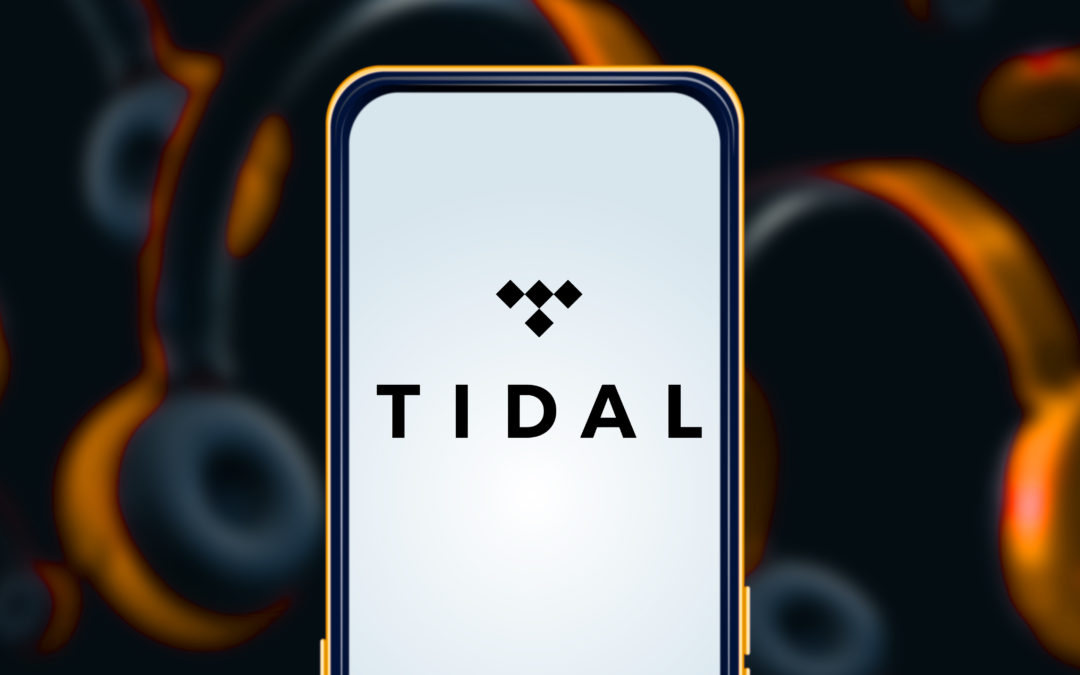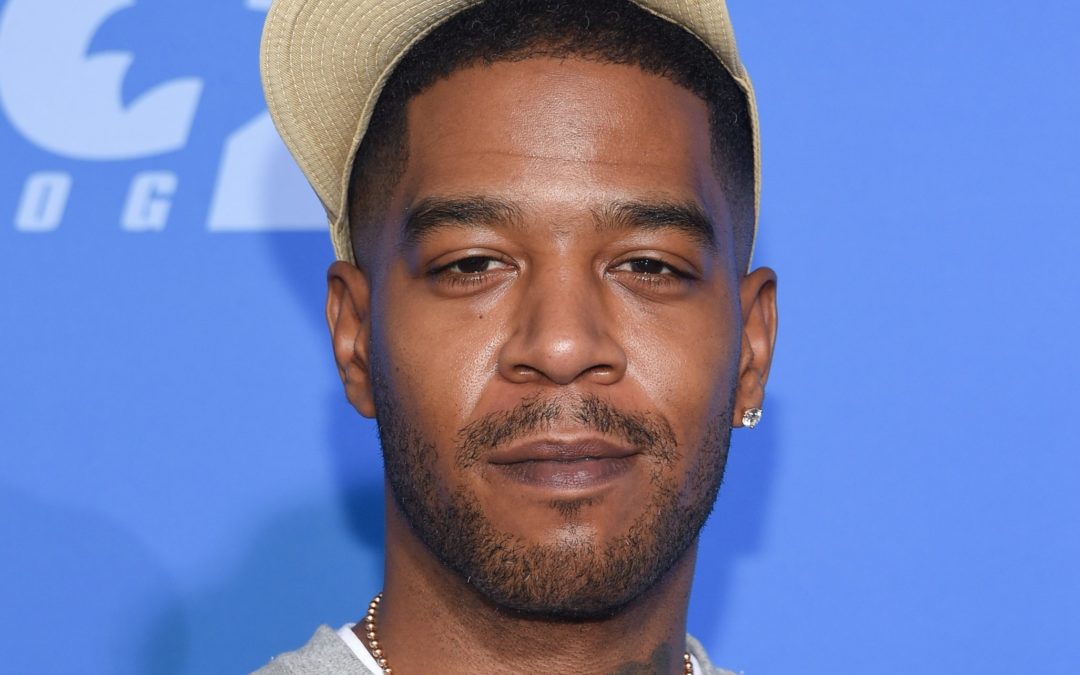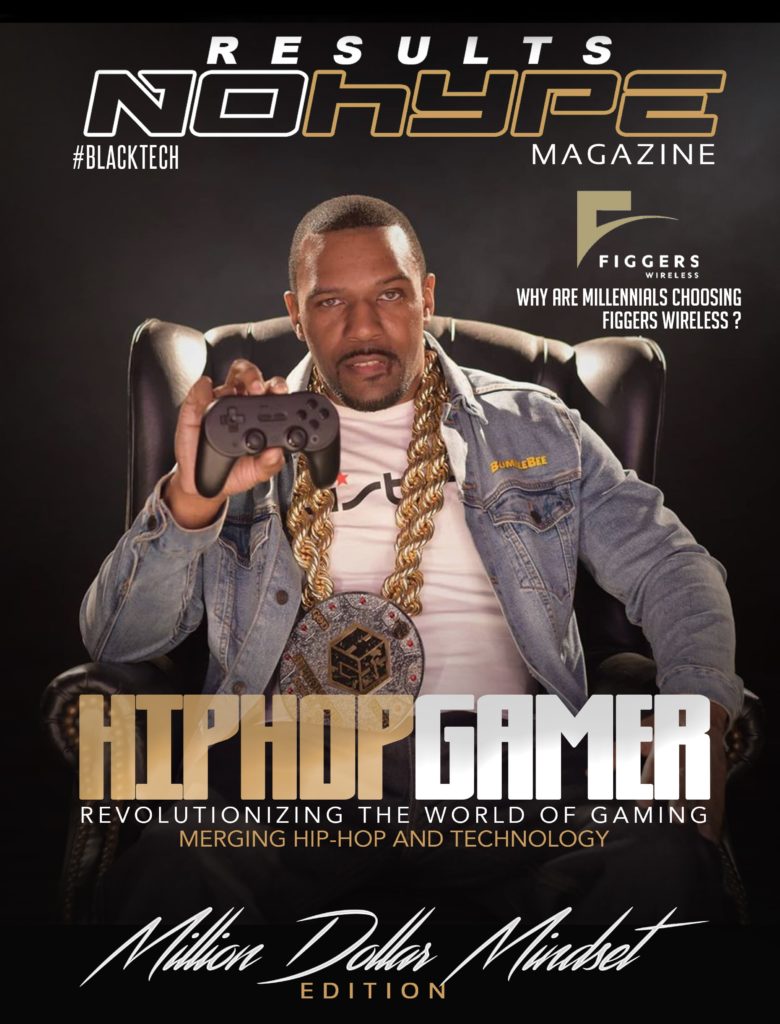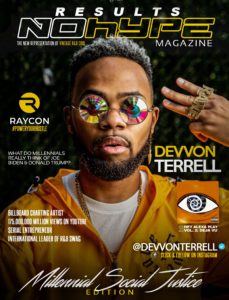
by Jonathan P-Wright | Jun 26, 2024 | Business News, Latest, Music News |
Image credit: DANIEL CONSTANTE / Shutterstock.com
Tidal, the pioneering platform renowned for its commitment to high-fidelity audio, has unveiled a strategic revamp of its lossless and immersive audio formats. This pivotal decision, slated to take effect on July 24th, marks a seismic shift in the company’s approach to delivering unparalleled sonic experiences to its discerning user base.
The Pursuit of Uncompromised Audio Quality
Tidal has long been revered as a bastion of pristine audio quality, catering to the discerning tastes of audiophiles and music enthusiasts alike. The platform’s unwavering dedication to lossless audio formats has set it apart from its contemporaries, garnering a loyal following among those who refuse to compromise on sonic fidelity.
Streamlining the Lossless Audio Experience
In a bold move, Tidal has announced that it will be phasing out support for the Master Quality Authenticated (MQA) and 360 Reality Audio formats. This strategic decision underscores the company’s commitment to providing a seamless and accessible lossless audio experience to its users.
The MQA format, while lauded for its ability to retain superior audio quality with smaller file sizes than traditional FLAC files, has faced challenges in terms of widespread adoption and compatibility. By transitioning away from MQA, Tidal aims to streamline its lossless audio offerings, ensuring a more consistent and user-friendly experience across a broad range of devices and platforms.
Embracing Open-Source and Industry-Leading Standards
Moving forward, Tidal has declared its intention to embrace the Free Lossless Audio Codec (FLAC) as the default format for stereo audio streaming. This open-source codec has gained widespread acceptance within the audiophile community, offering uncompromised audio quality without the constraints of proprietary formats.
Additionally, Tidal has chosen to adopt Dolby Atmos as its preferred format for immersive audio experiences. This cutting-edge technology, renowned for its ability to create a multi-dimensional soundscape, has garnered widespread industry adoption and boasts a vast catalog of compatible devices and content.
Prioritizing Accessibility and Cost-Effectiveness
In a candid acknowledgment of the challenges posed by proprietary formats, Tidal has cited the widespread compatibility, catalog availability, and artist adoption of Dolby Atmos as key factors in its decision-making process. By embracing industry-leading standards, the platform aims to provide its users with a seamless and cost-effective means of accessing high-quality audio content.
Furthermore, Tidal’s embrace of the open-source FLAC format for stereo audio streaming eliminates the need for artists to navigate through third-party intermediaries, fostering a more direct and efficient creative process.
Ensuring a Smooth Transition for Existing Users
For Tidal subscribers who have amassed collections of MQA tracks or albums, the platform has pledged to automatically replace these files with the highest available FLAC quality versions. This seamless transition extends to MQA files downloaded for offline playback, ensuring that users can continue to enjoy their cherished music libraries without interruption.
Conversely, 360 Reality Audio files will be rendered unavailable for streaming, reflecting Tidal’s strategic shift towards more widely adopted immersive audio formats.
Continuous Innovation and Commitment to Excellence
While Tidal has expressed no immediate plans for further changes to its audio format offerings, the company’s recent actions underscore its dedication to continuous innovation and its unwavering commitment to delivering the finest audio experiences to its user base.
This strategic overhaul comes on the heels of Tidal’s decision to consolidate its subscription tiers and lower its monthly pricing to $10.99, a move that aims to make premium audio streaming more accessible to a broader audience.
Redefining the Music Streaming Landscape
Tidal’s bold move to reshape its lossless and immersive audio formats represents a seismic shift in the music streaming landscape. By embracing open-source and industry-leading standards, the platform is poised to deliver unparalleled sonic experiences while fostering a more inclusive and cost-effective ecosystem for artists and music enthusiasts alike.
As the demand for high-fidelity audio continues to grow, Tidal’s commitment to pushing the boundaries of audio quality positions it as a trailblazer in the ever-evolving world of music streaming.
The Audiophile’s Sanctuary: Tidal’s Unwavering Pursuit of Sonic Perfection
For years, Tidal has stood as a beacon of hope for audiophiles and music aficionados seeking an uncompromising sonic experience. The platform’s unwavering dedication to lossless audio formats has garnered a loyal following among those who refuse to settle for anything less than sonic perfection.
Tiers of Audio Quality: Catering to Every Listener’s Needs
Tidal’s tiered approach to audio quality has long been a hallmark of its service, offering a range of options to cater to diverse listening preferences and technical capabilities. At the entry-level, the platform provides a low-quality tier that utilizes AAC files capped at 320kbps, suitable for casual listening or scenarios where bandwidth is limited.
For those seeking a more immersive experience, the high-quality tier offers CD-quality lossless FLAC files, ensuring that every nuance and detail of the music is faithfully reproduced.
However, it is the Max tier that truly sets Tidal apart, catering to the most discerning audiophiles. Until recently, this tier featured MQA and higher-resolution FLAC files, pushing the boundaries of audio fidelity and offering an unparalleled listening experience.
The MQA Conundrum: Balancing Innovation and Accessibility
Tidal’s decision to discontinue support for the MQA (Master Quality Authenticated) format has sent ripples through the audiophile community. While MQA garnered praise for its ability to retain superior audio quality with smaller file sizes than traditional FLAC files, its adoption was hindered by the requirement for specialized hardware or software to play the files.
This limitation, coupled with the introduction of Tidal’s HiRes FLAC format last year, signaled the impending demise of MQA on the platform. By making HiRes FLAC the preferred default for Max quality streaming, Tidal effectively paved the way for a more streamlined and accessible approach to lossless audio delivery.
Embracing Open Standards: The Rise of FLAC and Dolby Atmos
In a move that underscores Tidal’s commitment to accessibility and cost-effectiveness, the platform has embraced the Free Lossless Audio Codec (FLAC) as the default format for stereo audio streaming. This open-source codec, widely adopted by the audiophile community, offers uncompromised audio quality without the constraints of proprietary formats.
Additionally, Tidal has chosen to adopt Dolby Atmos as its preferred format for immersive audio experiences. This cutting-edge technology, renowned for its ability to create a multi-dimensional soundscape, boasts widespread industry adoption and a vast catalog of compatible devices and content.
By aligning with these industry-leading standards, Tidal aims to provide its users with a seamless and cost-effective means of accessing high-quality audio content, while fostering a more inclusive and efficient creative ecosystem for artists.
Prioritizing User Experience and Artist Empowerment
Tidal’s strategic decisions regarding audio formats were driven by a multitude of factors, chief among them being the prioritization of user experience and artist empowerment. By embracing widely compatible formats like Dolby Atmos and the open-source FLAC, the platform aims to eliminate barriers to entry and ensure that its users can seamlessly access premium audio content across a broad range of devices.
Moreover, Tidal’s embrace of FLAC for stereo audio streaming eliminates the need for artists to navigate through third-party intermediaries, fostering a more direct and efficient creative process. This move not only empowers artists but also aligns with Tidal’s overarching mission of delivering uncompromised audio experiences to its discerning user base.
Ensuring a Smooth Transition for Existing Libraries
In recognition of the potential disruption caused by the format changes, Tidal has implemented measures to ensure a smooth transition for its existing user base. For subscribers who have amassed collections of MQA tracks or albums, the platform has pledged to automatically replace these files with the highest available FLAC quality versions.
This seamless transition extends to MQA files downloaded for offline playback, ensuring that users can continue to enjoy their cherished music libraries without interruption. Conversely, 360 Reality Audio files will be rendered unavailable for streaming, reflecting Tidal’s strategic shift towards more widely adopted immersive audio formats.
Continuous Innovation and Commitment to Excellence
While Tidal has expressed no immediate plans for further changes to its audio format offerings, the company’s recent actions underscore its dedication to continuous innovation and its unwavering commitment to delivering the finest audio experiences to its user base.
This strategic overhaul comes on the heels of Tidal’s decision to consolidate its subscription tiers and lower its monthly pricing to $10.99, a move that aims to make premium audio streaming more accessible to a broader audience. By combining these initiatives, Tidal is poised to redefine the music streaming landscape, offering unparalleled sonic experiences while fostering a more inclusive and cost-effective ecosystem for artists and music enthusiasts alike.
The Future of Music Streaming: Tidal’s Vision
As the demand for high-fidelity audio continues to grow, Tidal’s commitment to pushing the boundaries of audio quality positions it as a trailblazer in the ever-evolving world of music streaming. By embracing open standards and industry-leading technologies, the platform is poised to deliver unparalleled sonic experiences while fostering a more inclusive and cost-effective ecosystem for artists and music enthusiasts alike.
With its unwavering pursuit of sonic perfection and its dedication to continuous innovation, Tidal stands as a beacon of hope for audiophiles and music aficionados seeking an uncompromising listening experience. As the future of music streaming unfolds, Tidal’s vision promises to redefine the boundaries of what is possible, elevating the art of music to new heights and ensuring that every note, every nuance, and every sonic detail is faithfully reproduced for generations to come.

by Pharron Fields | Nov 6, 2023 | Latest, Music News |
The UK-based dynamo, The Shellers, a creative fusion of producer Lawaun Bernard and vocalist Jamal Bucanon, have astounded the music world with their debut Extended Play (EP) christened ‘Long Live The Shellers’.
The Shellers: A Sonic Blend of Eclectic Influences
This dynamic duo takes inspiration from a diverse range of musical styles, including grime, garage culture, and more. Their sonic palette extends beyond these genres, with influences from the likes of the animated virtual band Gorillaz, the soulful Amy Winehouse, and the critically acclaimed hip-hop artist, Kendrick Lamar. Their musical tastes and influences, while broad, are cleverly interwoven, resulting in a unique sound that leaves a lasting impression.
Echoes of the Streets
In their music, there are occasional hints of The Streets, particularly in Jamal’s candid tale of contending with the daily grind, vividly depicted in the track ‘Work No More’. This narrative, while rooted in club culture, is not without its darker tones, setting The Shellers apart from their contemporaries.
A Collaborative Effort
While The Shellers essentially comprises Bernard and Bucanon, the EP is not without its supporting cast. Toddla T, renowned for his expertise in sound system culture, dons the hat of executive producer, lending his skills to this project. To further enhance their sound, The Shellers have roped in a full-fledged live band, adding a rich layer of strings, brass, and percussion.
“Working with The Shellers was a joy. We share a lot of musical influences, and it pushed me further. From not only an art point of view but from a friendship point of view, it was all rewarding.” – Toddla T
This collaboration has been a journey of mutual growth and exploration for both parties involved.
Conclusion
With their debut EP, ‘Long Live The Shellers‘, the duo has successfully blurred the lines in club music, establishing their unique sound in an increasingly homogenous landscape. Their story is a testament to the power of collaboration and the limitless potential of creative exploration.

by Jonathan P-Wright | Nov 1, 2024 | Latest, Music News, New Music Alert |
Image credit: Andrea Raffin / Shutterstock.com
minanceIn a candid revelation that has taken the entertainment world by storm, renowned rapper and cultural icon Nicki Minaj recently shared insights into her pre-fame struggles, including a notable incident that led to her dismissal from a popular seafood chain. This disclosure not only humanizes the superstar but also sheds light on the challenging path many artists traverse before achieving success in the competitive music industry.
Minaj’s admission came during her appearance as a guest speaker at a prestigious fashion event in New York City, where she engaged in a revealing conversation with a high-ranking executive from a major tech company. The discussion touched upon various aspects of her life, from her earliest employment experiences to her current status as a chart-topping artist.
The rapper’s recollection of her time as a server at a well-known restaurant chain provides a stark contrast to her current status as a global music sensation. It serves as a reminder of the humble beginnings from which many successful individuals emerge, highlighting the perseverance required to overcome early career setbacks.
This article delves into the details of Minaj’s pre-fame employment, the incident that led to her termination, and how these experiences shaped her journey to becoming one of the most influential figures in contemporary music. We’ll explore the broader implications of her revelations, examining how they resonate with aspiring artists and shed light on the often-unseen struggles behind the glitz and glamour of the entertainment industry.
Moreover, we’ll discuss Minaj’s recent professional triumphs, including her record-breaking tour and the impact of her latest musical offerings. By juxtaposing her past challenges with her current successes, we aim to provide a comprehensive portrait of an artist who has not only overcome adversity but has also redefined the landscape of hip-hop and pop culture.
Join us as we unpack the layers of Nicki Minaj’s journey, from her early setbacks to her rise as a musical powerhouse, and explore the valuable lessons her story imparts about resilience, ambition, and the unpredictable nature of success in the entertainment world.
Early Career Struggles
Nicki Minaj’s path to stardom was far from smooth, as evidenced by her recent revelations about her pre-fame employment history. The artist’s candid admissions provide a rare glimpse into the challenges faced by aspiring performers trying to make ends meet while pursuing their dreams.
During her formative years, Minaj encountered numerous obstacles in maintaining steady employment. Her experiences mirror those of countless individuals who struggle to find their footing in the professional world before discovering their true calling. The rapper’s honesty about these difficulties serves to humanize her public persona and creates a relatable narrative for fans and aspiring artists alike.
One of the most significant aspects of Minaj’s early career struggles was her tendency to lose jobs frequently. This pattern of employment instability is not uncommon among creative individuals who may find it challenging to conform to traditional workplace expectations while harboring ambitions of artistic success. The rapper’s admission that she “would always get fired” highlights the tension between pursuing one’s passion and meeting the demands of conventional employment.
These early setbacks, rather than deterring Minaj, seem to have fueled her determination to succeed in the music industry. The contrast between her past employment troubles and her current status as a global superstar underscores the transformative power of perseverance and talent. It also serves as a powerful reminder that success often comes after a series of failures and setbacks.
Minaj’s willingness to discuss her pre-fame struggles openly contributes to a broader conversation about the realities of pursuing a career in the arts. By sharing these experiences, she not only adds depth to her public image but also provides encouragement to those facing similar challenges in their own career journeys.
The Red Lobster Incident
Among the various employment experiences Nicki Minaj shared, her time as a server at Red Lobster stands out as particularly noteworthy. This episode in her pre-fame life not only illustrates the challenges she faced but also provides insight into her personality and the events that shaped her journey to stardom.
Minaj’s tenure at the popular seafood restaurant chain was marked by an incident that ultimately led to her dismissal. The situation unfolded when a couple dined at the establishment where Minaj was working. As is customary in the service industry, Minaj provided the diners with a pen to sign their credit card slip. However, what transpired next would prove to be a pivotal moment in her employment history.
Upon returning to the table, Minaj discovered that not only had the couple failed to leave a tip, but they had also taken the pen she had provided. This dual transgression – the absence of gratuity and the appropriation of restaurant property – struck a chord with the future rap star. In her own words, it “set [her] off,” prompting a reaction that would have significant consequences.
Driven by a sense of injustice and frustration, Minaj pursued the couple into the parking lot. Her actions in that moment reveal a glimpse of the assertiveness and passion that would later become hallmarks of her artistic persona. Confronting the diners, she demanded the return of the pen, going so far as to forcefully knock on their car window.
The intensity of Minaj’s reaction, while understandable from the perspective of a frustrated server, crossed professional boundaries. The couple reported the incident to management, resulting in Minaj’s termination from her position at Red Lobster. This event serves as a vivid illustration of the challenges Minaj faced in conforming to traditional workplace norms and expectations.
While the incident led to her dismissal, it also showcases traits that would later contribute to her success in the music industry: her unwillingness to be taken advantage of, her boldness in confronting perceived wrongs, and her passionate nature. These qualities, when channeled into her music and performances, would become integral to her appeal as an artist.
Minaj’s reflection on the healing nature of her recent tour performances highlights a mature perspective on her role as an artist. This acknowledgment of the reciprocal emotional impact between performer and audience suggests a deep understanding of the power and responsibility that comes with her platform.
The success of Minaj’s Pink Friday 2 World Tour, breaking records for female rap artists, serves as a testament to her growth and enduring appeal. This achievement not only cements her status in the music industry but also paves the way for future generations of female rappers, challenging industry norms and expectations.
Moreover, Minaj’s career trajectory offers valuable lessons about the importance of authenticity and staying true to one’s artistic vision. Despite facing numerous challenges and industry pressures, she has maintained a distinctive style and persona that has become her trademark.
Her journey also illustrates the potential for personal reinvention and the ability to turn adversity into opportunity. The skills and resilience developed during her early struggles have undoubtedly contributed to her ability to navigate the complexities of fame and maintain relevance in a rapidly changing industry.
Lessons for Aspiring Artists
Nicki Minaj’s journey from service industry struggles to global stardom offers a wealth of valuable lessons for aspiring artists across all creative fields. Her experiences and reflections provide insights that can guide and inspire those looking to make their mark in the competitive world of entertainment.
One of the primary lessons that emerges from Minaj’s story is the importance of perseverance. Her ability to overcome early career setbacks, including multiple job losses, demonstrates the crucial role of resilience in achieving long-term success. Aspiring artists can draw inspiration

by Jonathan P-Wright | Sep 20, 2024 | Latest, Music News, New Music Alert |
Image credit: stock_photo_world / Shutterstock.com
In a year marked by chart-shattering success, the inimitable Future has once again solidified his status as a musical juggernaut with the unveiling of his latest opus, ‘Mixtape Pluto.’ This release not only heralds the artist’s pursuit of an unprecedented third number-one debut in 2024 but also positions him as a contender for the first artist to secure a trio of Billboard 200 chart-toppers within a mere six-month span.
A Year of Unparalleled Triumphs
As the calendar flipped to 2024, wasted no time in asserting his dominance over the music landscape. In a display of unrivaled artistry and commercial prowess, he kickstarted the year with the release of ‘We Don’t Trust You,’ a collaborative effort with the acclaimed producer Metro Boomin. This dynamic duo’s chemistry was undeniable, as the album swiftly ascended to the coveted number-one spot on the Billboard 200 chart.
Not content to rest on his laurels, Future doubled down on his success, joining forces once again with Metro Boomin for the equally impressive ‘We Still Don’t Trust You.’ This second installment in their musical partnership further cemented their status as a formidable creative force, with the album garnering critical acclaim and commercial success.
A Lyrical Showdown for the Ages
Among the standout moments of ‘We Don’t Trust You’ was the track “Like That,” which featured an unexpected yet electrifying cameo from the legendary Kendrick Lamar. Lamar’s verse ignited a lyrical firestorm, sparking a highly publicized and historically significant back-and-forth exchange with none other than Drake. This clash of titans captivated the music world, leaving fans eagerly anticipating the next volley in this epic rap battle.
Hitting the Road with Unwavering Confidence
Riding the wave of their chart-topping achievements, Future and Metro Boomin embarked on the aptly named “We Trust You” tour, a nationwide trek that allowed them to share their electrifying chemistry with audiences across the country. The tour, which wrapped up earlier this month, served as a testament to the duo’s enduring popularity and the insatiable demand for their live performances.
‘Mixtape Pluto’: A Solo Masterpiece
While his collaborations with Metro Boomin have undoubtedly left an indelible mark on the music industry, Future has proven time and again that he is a force to be reckoned with in his own right. ‘Mixtape Pluto’ stands as a testament to his solo prowess, marking his first full-length release since the critically acclaimed ‘I Never Liked You’ in 2022.
Clocking in at 17 tracks, ‘Mixtape Pluto’ promises to be a multifaceted exploration of Future’s unparalleled artistry. While the initial tracklist did not feature anticipated appearances from Travis Scott and Gunna, the album’s cover art has already sparked intrigue among fans. The striking image depicts the famous Dungeon family house in Georgia, a nod to Future’s roots and the rich musical heritage that has shaped his sound.
A Relentless Pursuit of Greatness
As Future prepares to unleash ‘Mixtape Pluto’ upon the world, the anticipation among his devoted fanbase is palpable. With his sights set on securing an unprecedented third number-one debut in 2024 and potentially becoming the first artist to achieve a trio of Billboard 200 chart-toppers within a six-month span, the stakes have never been higher.
Yet, for an artist of Future’s caliber, such lofty goals are mere stepping stones on a path to greatness. His unwavering dedication to his craft, coupled with an uncompromising artistic vision, has propelled him to the forefront of the music industry, solidifying his status as a true icon of our time.
As the world eagerly awaits the arrival of ‘Mixtape Pluto,’ one thing is certain: Future’s relentless pursuit of musical excellence shows no signs of slowing down. Brace yourselves, for this unstoppable force is poised to once again redefine the boundaries of hip-hop and leave an indelible mark on the annals of music history.
The Rise of the Rapper/Producer Collaborative Album
The success of Future’s collaborations with Metro Boomin is part of a larger trend that has been gaining momentum in recent years: the rise of the rapper/producer collaborative album. These joint efforts, which bring together the creative forces of both a skilled lyricist and a visionary beatmaker, have proven to be a potent formula for chart-topping success.
Synergy and Creative Chemistry
At the heart of these collaborative albums lies a synergistic relationship between the rapper and the producer. When these two creative forces align, the result is a seamless fusion of lyrical prowess and sonic artistry, resulting in a cohesive body of work that transcends the sum of its parts.
One of the key advantages of this collaborative approach is the ability to craft a unified sonic landscape that serves as the perfect canvas for the rapper’s lyrical expression. The producer’s beats and instrumentals become more than just a backdrop; they become an integral part of the storytelling process, enhancing the emotional resonance and thematic depth of the lyrics.
Artistic Exploration and Boundary-Pushing
Another significant aspect of these collaborative albums is the opportunity for artistic exploration and boundary-pushing. When two creative minds come together, they often push each other to new heights, challenging one another to step out of their comfort zones and explore uncharted creative territory.
This spirit of experimentation and risk-taking has given rise to some of the most innovative and genre-defying albums in recent memory. From the genre-bending fusion of hip-hop and electronic music to the incorporation of unconventional instrumentation and production techniques, these collaborative efforts have consistently pushed the boundaries of what is possible in the realm of hip-hop and beyond.
Building a Lasting Legacy
Beyond their commercial success and artistic merit, these rapper/producer collaborative albums have also proven to be a powerful vehicle for building lasting legacies. When two artists join forces and create a body of work that resonates with audiences on a profound level, they etch their names into the annals of music history, solidifying their place as cultural icons.
The enduring impact of these collaborations can be seen in the way they inspire and influence future generations of artists, perpetuating a cycle of creative evolution that keeps the art form fresh and relevant. As Future and Metro Boomin continue to build upon their already impressive legacy, they serve as a testament to the enduring power of these collaborative efforts.
The Significance of the Dungeon Family House
The cover art for ‘Mixtape Pluto’ has already sparked intrigue among Future’s devoted fanbase, featuring a striking depiction of the famous Dungeon family house in Georgia. This artistic choice is more than just a nod to Future’s roots; it represents a profound connection to the rich musical heritage that has shaped his sound and influenced his artistic journey.
The Dungeon Family: A Breeding Ground for Talent
The Dungeon Family is a collective of musicians, producers, and artists that emerged from the vibrant hip-hop scene in Atlanta, Georgia, during the 1990s. This collective, which included influential figures such as OutKast, Goodie Mob, and Organized Noize, played a pivotal role in shaping the unique sound and aesthetic that would come to define the city’s musical identity.
At the heart of the Dungeon Family was the Dungeon family house, a physical space where these creative minds would gather to collaborate, exchange ideas, and push the boundaries of their art. This house served as a breeding ground for talent, fostering an environment of experimentation and artistic growth that would ultimately give rise to some of the most iconic and influential works in hip-hop history.
Paying Homage to Roots and Influences
By featuring the Dungeon family house on the cover of ‘Mixtape Pluto,’ Future is paying homage to the very roots that nurtured his artistic journey. This visual representation serves as a powerful reminder of the rich tapestry of influences that have shaped his sound, from the gritty urban landscapes of Atlanta to the innovative spirit of the Dungeon Family collective.
Moreover, this artistic choice is a testament to Future’s respect for those who came before him, acknowledging the shoulders upon which he stands as he continues to push the boundaries of hip-hop and cement his own legacy.
Preserving a Cultural Legacy
Beyond its personal significance for Future, the inclusion of the Dungeon family house on the album cover also serves a broader purpose: preserving and celebrating a cultural legacy that has profoundly impacted the music industry.
By shining a spotlight on this iconic location, Future is ensuring that the story of the Dungeon Family and its indelible impact on hip-hop culture is not forgotten. This act of preservation is crucial in a rapidly evolving artistic landscape, where the contributions of pioneering artists and collectives can sometimes be overshadowed by the latest trends and fads.
In this sense, ‘Mixtape Pluto’ becomes more than just a musical offering; it becomes a cultural artifact, a testament to the rich tapestry of influences that have shaped the art form and a reminder of the enduring power of creativity and innovation.

by Jonathan P-Wright | Sep 20, 2024 | Latest, Music News, New Music Alert |
Image credit: DFree / Shutterstock.com
VideoIn a heartfelt homage to the city that embraced him, hip-hop maverick Kid Cudi has unveiled the music video for his latest track, “Don’t Worry,” featuring Chip Tha Ripper. The visuals, self-directed by Cudi, serve as an ode to his profound connection with New York City, a place he fondly refers to as his “second home.”
A Journey Through the Streets of New York
The video opens with a poignant message from the artist himself, setting the tone for the narrative that unfolds. “I moved to NY in 2004,” Cudi’s words appear on the screen. “Over the years, it became my second home. To the people of NY, this is my love letter to you. Thank you for always making me feel like family. I love you endlessly. Enjoy.”
From there, the visuals transport viewers on a captivating journey through the iconic streets of New York City, capturing the essence of the bustling metropolis that has played a pivotal role in shaping Cudi’s artistic identity.
Cinematic Collaboration with Brett Bushell
To bring his vision to life, Cudi enlisted the talents of Brett Bushell, a renowned cinematographer with whom he has forged a strong collaborative bond over the years. Bushell’s expertise in capturing the raw energy and grit of urban landscapes is evident throughout the video, as he seamlessly blends Cudi’s narrative with the pulsating heartbeat of the city.
A Reunion with Chip Tha Ripper
Adding an extra layer of nostalgia to the release, “Don’t Worry” features a guest appearance from Chip Tha Ripper, also known as King Chip. The two artists have a history of successful collaborations, including the RIAA-certified platinum hit “Just What I Am” from 2012, which solidified their creative chemistry.
Exploring Themes of Belonging and Artistic Growth
Throughout the visuals, Cudi weaves a tapestry of themes that resonate deeply with his artistic journey. The concept of belonging and finding a sense of home, even in the most unlikely of places, is a recurring motif. As he navigates the bustling streets, Cudi’s connection to the city is palpable, a testament to the transformative power of art and the ability to forge lasting bonds with places and people.
Moreover, the video serves as a celebration of Cudi’s artistic growth and evolution. From his humble beginnings as a newcomer in the city to his current status as a revered figure in the music industry, the visuals encapsulate the artist’s unwavering determination and resilience.
Tying It All Together: The Moon Man Comic Book Series
Coinciding with the release of “Don’t Worry” is the fourth issue of Cudi’s highly anticipated “Moon Man” comic book series. The series, which debuted in January, has been receiving bimonthly installments, culminating in the September 25th release of issue No. 4. Fans can look forward to the fifth issue, slated for an October 16th release, further expanding the immersive narrative universe crafted by Cudi.
A Multifaceted Artistic Expression
Through the “Don’t Worry” music video and the “Moon Man” comic book series, Kid Cudi continues to push the boundaries of artistic expression. His ability to seamlessly blend music, visuals, and storytelling is a testament to his versatility and unwavering commitment to creating art that resonates on multiple levels.
Celebrating New York City’s Embrace
At its core, the “Don’t Worry” music video is a heartfelt celebration of the city that embraced Cudi and provided him with a canvas to unleash his creativity. From the gritty streets to the towering skyscrapers, the visuals capture the essence of New York City’s indomitable spirit, a spirit that has undoubtedly influenced and shaped Cudi’s artistic journey.
A Lasting Connection and Gratitude
As the video draws to a close, Cudi’s message of gratitude and love for the city resonates profoundly. His words, “Thank you for always making me feel like family. I love you endlessly,” encapsulate the depth of his connection with New York City and the lasting impact it has had on his life and art.
A Reflection on Artistic Journeys and Finding Home
The “Don’t Worry” music video serves as a poignant reminder that artistic journeys are often intertwined with the places and people that shape our experiences. For Kid Cudi, New York City has been more than just a backdrop; it has been a catalyst for his creative growth, a sanctuary where he has found solace and inspiration.
Through his music and visuals, Cudi invites viewers to embark on a introspective journey, encouraging them to embrace the unexpected paths that life may present and to find beauty in the connections forged along the way.
A Celebration of Authenticity and Nonconformity
Underpinning the “Don’t Worry” music video is a celebration of authenticity and nonconformity, values that have been at the core of Kid Cudi’s artistic ethos. By embracing his unique perspective and refusing to conform to societal norms, Cudi has carved out a distinct path, inspiring countless others to embrace their individuality and pursue their passions fearlessly.
A Lasting Legacy and Continued Artistic Evolution
As Kid Cudi continues to push boundaries and explore new creative avenues, the “Don’t Worry” music video stands as a testament to his enduring legacy and unwavering commitment to artistic growth. With each release, he invites his audience to join him on a journey of self-discovery, challenging them to embrace their authentic selves and find solace in the unexpected.








RECENT COMMENTS